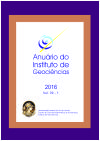Evaluation of Methods for Reference Evapotranspiration Estimation for Irrigation Water Management
DOI:
https://doi.org/10.11137/2016_1_42_51Keywords:
Agrometeorology, Reference evapotranspiration, Irrigation water managementAbstract
Knowledge of the evapotranspiration is very important regarding activities connected to water management of the irrigated agriculture. The equation of Penman-Monteith FAO56 has been recommended by FAO, the Food and Agriculture Organization of the United Nations, as the standard for estimating reference evapotranspiration (ETo). But this equation requires many variables that are not available at most weather stations in Brazil. Therefore, the aim of this study was to analyze five empirical methods to estimate reference evapotranspiration (ETo) and compare then with the Penman-Monteith FAO56 for the climatic conditions in the city of Piraí do Sul, Paraná state, Brazil. The meteorological data were measured for the period 04/07/2008 to 12/10/2008 for an automatic weather station during the growing season of wheat crop. The results shows that, for the climatic conditions of the studied location, the best methods to estimate reference evapotranspiration were: Solar Radiation, Jensen-Haise and Makkink. The worst performance were presented by the method of Hargreaves-Samani, followed by the method of Camargo.Downloads
Download data is not yet available.
Downloads
Published
2017-02-15
How to Cite
Paiva, C. M. and Souza, A. da S. P. de (2017) “Evaluation of Methods for Reference Evapotranspiration Estimation for Irrigation Water Management”, Anuário do Instituto de Geociências. Rio de Janeiro, BR, 39(1), pp. 42–51. doi: 10.11137/2016_1_42_51.
Issue
Section
Article
License
This journal is licensed under a Creative Commons — Attribution 4.0 International — CC BY 4.0, which permits use, distribution and reproduction in any medium, provided the original work is properly cited.















